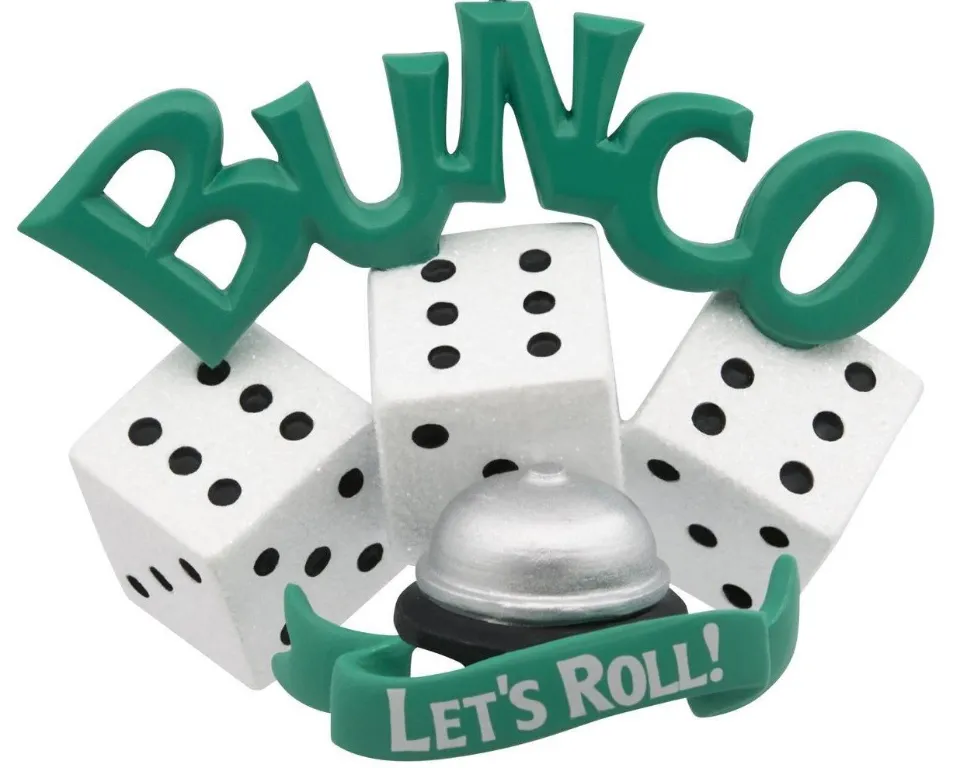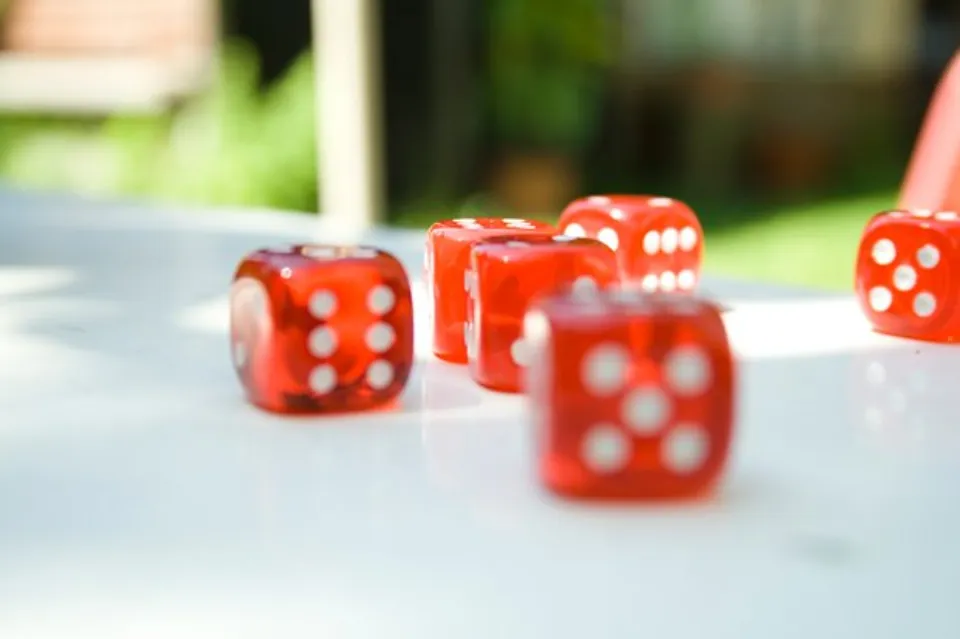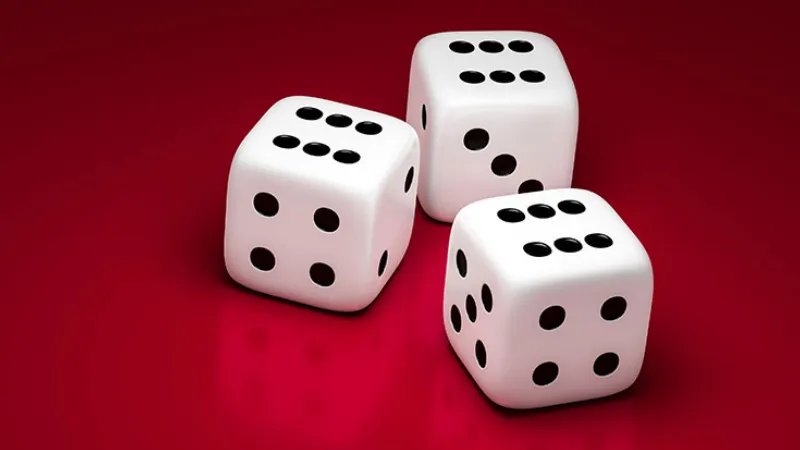Bunco, also spelled Bonko or Bunko, is a well-liked dice game that requires a lot of luck. Play bunco with your family, friends, or the other 11 people you ended up stranded on an island with. Follow these steps to learn how to play Bunco:
Begin round one of the game; Let the first player continue to roll until he/she doesn’t roll the number needed; Finish round one; Winning teams write a W on their cards; Switch partners; Continue playing; Keep score; Determine the winner.
Keep reading.
Table of Contents
How to Play Bunco?
Here are the details;
Begin Round One of the Game
The three dice will be taken by one person at the table, who will roll them. Since this is Round 1, they’ll want to get as many 1s as they can.
- He or she receives one point for each 1, unless they roll three 1s, in which case they would receive a 21 (the maximum number of points that could be awarded). This is called a “bunco”, hence the name of the game. When a player gets a bunco, they should yell “Bunco!” Place a hash mark next to the player’s card that was the bunco winner.
- The player receives five points but does not complete a bunco if they roll three of a kind but they are not 1.
Let the First Player Continue to Roll until He/she Doesn’t Roll the Number Needed
The dice are passed to the left when he/she doesn’t get the correct number. In the first round, for instance, if a player rolls the dice and gets a 3, 4, and 6, he or she must pass the dice to the following player because none of those dice were a 1.
- Additionally, once a player reaches 21 points, the dice must be passed. Either obtaining a bunco or rolling the dice in such a way that at least one of the numbers produced matches the required number and then increasing the score are both acceptable methods of accomplishing this.

Finish Round One
A team from the head table receives 21 points or more to end the round. That team must yell out “game!” The round ends when the scorekeeper at the head table rings the bell. The team with the most points at each table wins that round for that particular table.
- Players may complete the roll they were working on when the bell rang.
- One member from each team must roll a die if there is a tie at a table. The team’s victory is determined by whoever rolls the highest number.
Winning Teams Write a W on Their Cards
Teams that lose (have fewer points) mark their cards with an “L.” Adjust shifts for the teams.
- The winning team at the head table stays there. The losing team moves to the middle table from the head table.
- The top table is moved up to the winning team at the middle table. The unsuccessful team descends to the unsuccessful table.
- The winning team at the losing table is promoted to the middle table. The losing team remains at the losing table.
Switch Partners
While it is not required, doing so makes the game more engaging. Once each team has moved to the appropriate table, switch partners so that you make up a whole new team.
Continue Playing
A new number of two must be rolled for the teams to advance to round two.) Bunco consists of six rounds. Playing all the way to round 6 completes one hand of the game.
Keep Score
Keep track of your team’s progress (you and the opponent) as well as your own (how many buncos you’ve received) by keeping score on both fronts.
Determine the Winner
Following the conclusion of all rounds, each player should tally their total number of buncos, wins, and losses. You can either play that the person with the most buncos wins, or the person with the most buncos and ‘wins’ wins. Consequently, give out prizes.
Why Bunco is Good for Families and Groups
- Simple to play: In that it relies solely on luck, the game is similar to bingo in that regard. No skill implies that everything is simple for everyone!
- Fun: The game moves quickly, is social with constantly rotating tables, and is noisy (dice rolling, talking, and people yelling “BUNCO” and fun!.
- Minimal skills required: math (counting and simple math), taking turns
- 4 and up, a broad age range.
Bunco Rules
Here are the details:
Bunco Setup
- How many people participate in bunco?
A standard bunco “party” has 12 players, grouped into fours at separate tables. The two teams are seated across from one another at a four-person table. As four people sit at each table, the groupings, however, function well in any multiple of four. See the FAQ at the bottom of the page for instructions for games with odd numbers of players.
- Tables
In the 12 player version, there are 3 tables of 4 players:
- Head table:Controls the flow of the game. When the scorekeeper at the head table begins their first turn, play for all tables begins. It ends when a team at the head table scores 21 points.
- Middle table(s):Any table between the “head” and “end” table.
- End table:The last table.
Note: You can easily have more tables (just add more middle tables and number all the tables: 1, 2, 3, 4, etc.) or fewer tables (just remove the middle table, or the middle and end table). to make the flow of the table rotations clear).
- Bunco dice
3 dice are required per table.

Variations
While we’re describing the most typical bunco setups, some groups may change the number of players, the prizes awarded, the order in which the games are played, and other factors. Go for it as long as it is understandable and enjoyable!
The majority of variation questions center on the player count, and we have a thorough guide for each player count below. To add or remove groups of four players, all you need to do is add or remove a table. You must decide how you want to respond to situations involving odd numbers. Typically, you have 3 options: change the number of players per table, use a ghost player, or have a certain number of players sit out each round.
Scoring
- Wins and Rounds
Each set of bunco has 6 rounds, one for each number on the dice. Rounds continue until a player at the head table scores 21 points. Upon the conclusion of the round, the team with the most points wins. The team with the highest combined team score wins the round in the event of a tie.
Even if they have more than 21 points, players at any table other than the head table can still play until then.
- Rolls and Points
There are two ways to score points in bunco:
- The round number is matched by one or more of your dice (e.g. you roll a 3 in round 3)
- All 3 dice are the same number (All dice are 1s, all are 2s, etc)
Scoring is as follow:
- 1 die matches the round number = 1 point
- 2 dice matching the round number = 2 points
- 3 dice matching the round number = 21 points (this is called a Bunco!)
- 3 dice of same number but don’t match round number = 5 points
- Buncos
Any individual who rolls a bunco gets a special “bunco” score mark.
- Turns
- Score and continue:Players take “turns” rolling in each round. The player who is rolling continues rolling if they receive any points on that roll.
- Don’t score, pass:A player’s turn ends if they fail to receive any points during a roll, and the turn of the player to their left (clockwise) then begins.
- Keep taking turns until the head table scores 21:Each round’s number of turns for players can vary depending on how quickly or slowly the head table scores 21 points.
Winners and Prizes
- Winners
Having won the most total rounds, a player is declared the official bunco champion. However, there are more additional consolidation prizes offered as the group size increases, including those for the most buncos, traveling bunco, highest score, lowest score, etc. To find out who should win, consult the FAQ.
- Prizes
Some bunco groups have each player ante into a prize “pot” before play starts, then divide the pot across several winners. Physical prizes provided by the host will go to other groups.
In general, since the pot is bigger with a larger group, you can add more prizes. Consult the FAQs for a suggested list of prize divisions.
- Ties
If there is a tie for first place in a prize category, you can split the prize if both players agree or conduct a roll-off round to decide the winner.
Read about How Does Cocaine Affect Your Brain?
FAQs
How Many People Do You Need to Play Bunco?
Each table should seat four individuals. A typical Bunco game consists of three tables–one “losing” table, one “middle” table and one head table. The winning table is the worst; the head table is the best; and the middle table is in the middle. Create teams at each table.
How Do You Start a Bunco Party?
When you’re planning a Bunco party, you will generally have at least twelve people together. You have a Bunco squad. Three tables the size of card tables are required. You can also set it up where two teams can share a longer table (one team on each end), and the third team can use a card table.
Summary: How to Play Bunco?
Begin round one of the game; Let the first player continue to roll until he/she doesn’t roll the number needed; Finish round one; Winning teams write a W on their cards; Switch partners; Continue playing; Keep score; Determine the winner.
Please post a comment if you have any queries. For reading, I’m grateful.



